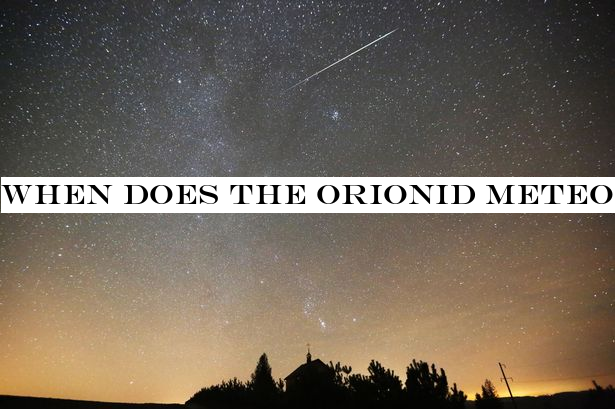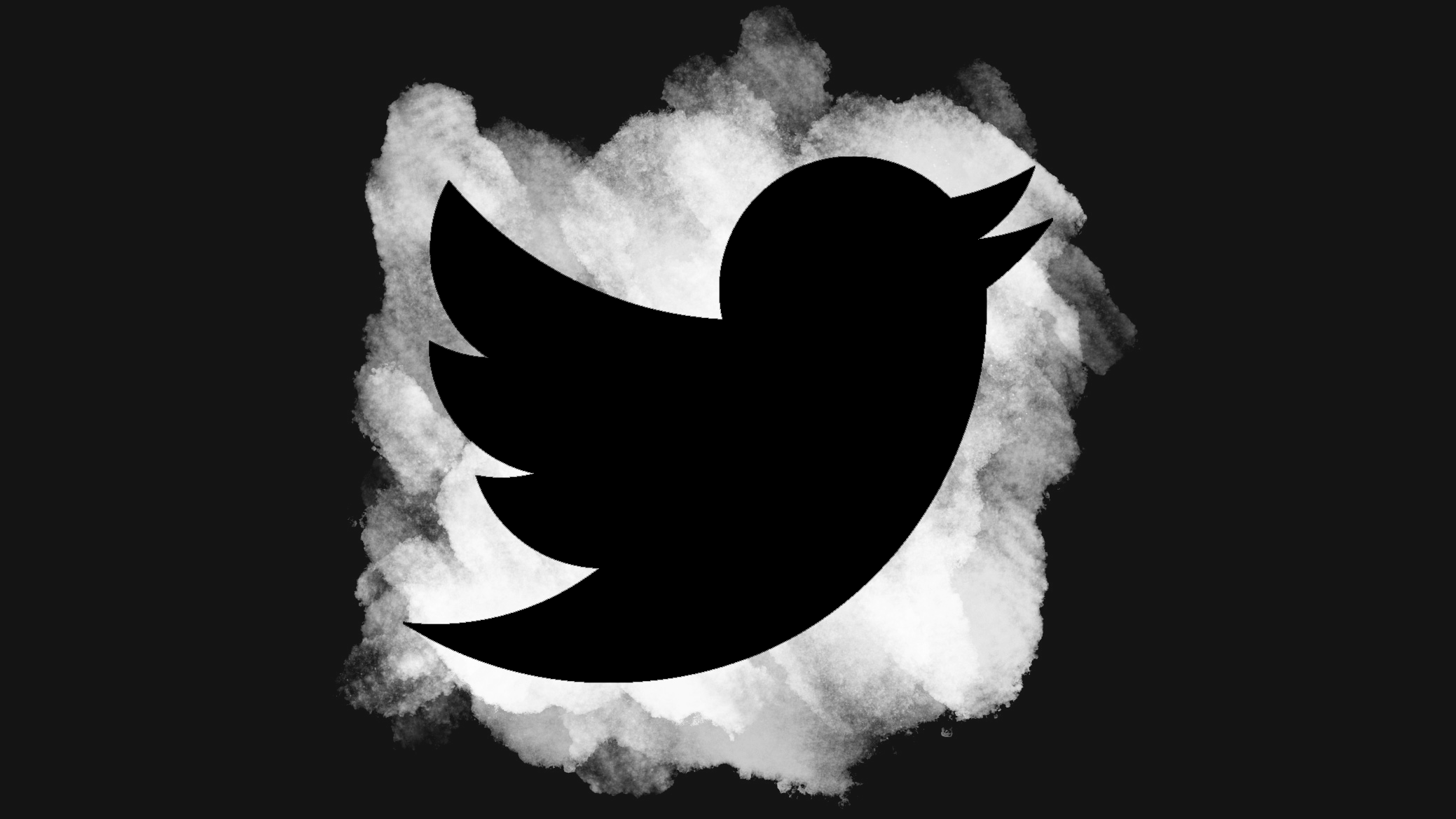Music
Trailers
DailyVideos
India
Pakistan
Afghanistan
Bangladesh
Srilanka
Nepal
Thailand
StockMarket
Business
Technology
Startup
Trending Videos
Coupons
Football
Search
Download App in Playstore
Download App
Best Collections
Technology

- Details
- Category: Technology
Read more: When does the Orionid Meteor Shower peak in 2019 - and what time is best to watch
Write comment (92 Comments)
Nadiem Makarim, founder and CEO of Gojek, said on Monday he has stepped down from his role at the ride-hailing startup to join Indonesia president Joko Widodocabinet.
The announcement, which has taken many by surprise, comes a day after Widodo was sworn in for a second term. Widodo has previously said that he wants young business executives to join his cabinet.
In a statement, a Gojek spokesperson told TechCrunch that Andre Soelistyo, Gojek Group President and Kevin Aluwi, Gojek co-founder, are taking over as co-CEOs of the startup.
&We are very proud that our founder will play such a significant role in moving Indonesia onto the global stage. It is unprecedented for a passionate local foundervision to be recognized as a model that can be up-scaled to help the development of an entire country,& the spokesperson said.
&We have planned for this possibility and there will be no disruption to our business. We will make an announcement on what this news means for Gojek within the next few days. We respect the process set out by the President and will not make a further comment until there is an official announcement from the Palace,& the spokesperson added.
Makarim (pictured above) said he was honored that the president had asked him to join his cabinet as a minister. He did not reveal which position he would hold, but an announcement from Widodo is expected later this week. &I am very happy to be here today as it shows we are ready for innovation and to move forward,& he told reporters.
Makarim founded Gojek in 2010 as a two-wheeler hailing service. The startup has since expanded to include a range of services including mobile payments, food delivery, online shopping and most recently on-demand video streaming.
The startup has amassed more than 2 million driver partners and 400,000 merchants on its platform. Gojek was valued at almost $10 billion in its most recent financing round. The company, which operates in Singapore, Vietnam, and Thailand, clocked gross transaction worth $9 billion last year.
Makarim comes from a prominent Indonesian family: His parents are anti-corruption activist, while his grandfather is an independence hero.
- Details
- Category: Technology

Facebook is willing to reverse course on its plans to tie its digital currency project to a synthetic currency tied to a basket of global currencies.
Reuters is reporting that Facebookhead of the Libra project, David Marcus, told a group of bankers that the companymain goal was to create a better payments system and was open to alternative approaches to the original structure of the project.
Facebook and its partners had intended to create its cryptocurrency by pegging it to a basket of national currencies whose holdings would be set by the Libra Association.
National banks considered the plan part of a dangerous end-run around their regulatory authority and have been holding up the project until they could assume tighter control over how the Facebook-architected cryptocurrency and payment technology would operate.
The scrutiny from regulators proved too much for some of Facebooklargest, and earliest, partners in the Libra Association, whose members would determine how the cryptocurrency would operate.
In the past month seven of the Libra Associationfounding members dropped out including: PayPal, Mastercard, Visa, Ebay, and Stripe. Those seven represented a big chunk of the strategic value and commercial heft of the planned association, with Stripe, Mastercard, Visa, and Ebay standing in for a huge number of payment processors and merchant touchpoints that the new cryptocurrency would need were it to dramatically scale to the size Facebook wanted right out of the gate.
Now, in another strategic reversal, Marcus is conceding the synthetic currency in favor of stablecoins tied to the local currency in each market that Libra would operate.
&We could do it differently,& Reuters quoted the Libra Association chief as saying. &Instead of having a synthetic unit … we could have a series of stablecoins, a dollar stablecoin, a euro stablecoin, a sterling pound stable coin, etc.&
All of this is happening against the backdrop of Facebookstated launch date of June 2020 for the Libra cryptocurrency. Marcus told Reuters that the June launch was still the goal, but that the association would not move forward unless it had addressed the concerns of regulators and received the proper approvals.
Those approvals are becoming harder to come by as the regulators who overseen global monetary policy cast a more skeptical eye at on stablecoins as well.
Reuters reported that the G-20 financial overseers wrote in a statement that money laundering, illicit finance and consumer protection need to be evaluated before any stablecoin projects can &commence operation.&
- Details
- Category: Technology
Read more: In a big reversal, Libra reportedly could peg its cryptocurrencies to national currencies
Write comment (91 Comments)Years ago, I wrote a piece criticizing a cover story by a well-known writer and political commentator that I&d met a few times, with whom I&d occasionally sparred on Twitter. The piece wasn&t merely a representation of my own views, but pulled in snarky tweets from other journalists disparaging her work too. It was a pile-on, and not my proudest moment.
The Writer wasn&t exactly thin-skinned; in fact, quite the contrary: She was a brash, sometimes obnoxious feminist with strong opinions, unafraid to speak her mind. I often agreed with her, even when I found her delivery abrasive. Still, after a couple of years with me as a thorn in her side, she decided she&d had enough—and so she did something that many readers will find familiar: She blocked me on Twitter.
The block button is an important tool that allows women and other vulnerable people to have some semblance of the same Twitter experience that the average white man might, free from constant harassment. I couldn&t tell you how many times I&ve used it over the years to drown out nasty ad hominems, sea lions, and of course, sexual harassment and worse.
Twitter wasn&t always the &hell site& we know it as today. Many early users like me found professional advancement and lasting friendship in 140-character missives. But as the site grew, so did its potential for misuse. By 2014—two years shy of its tenth anniversary—Twitter had become central to the GamerGate controversy, ostensibly a dispute about issues of sexism and progressivism in gaming but on Twitter, a free-for-all of harassment and doxing of any woman even tangentially involved in the discussion. The harassment was so severe that it drove some women off the site permanently.
Out of GamerGate emerged better tools for blocking, tools like BlockTogether that allow individual users to share a list of people they&ve blocked. The idea behind these tools is that harassers are likely to have multiple targets, so why not make it easier for potential targets of harassment to block numerous would-be harassers all at once?
But BlockTogether and similar tools are not without flaws. Once you&re on a blocklist, it can be hard to get your name removed and if you end up, for whatever reason, on one created by a prominent or well-respected user, you may find yourself blocked by people you don&t know and would&ve enjoyed following. Some might call this reasonable collateral damage.
Numerous journalists and others have complained of finding themselves on a blocklist after a disagreement with an individual who uses them. I&m unfortunately on one used by a number of journalists. Why, you might ask, was I blocked in the first place? I remember quite clearly: It was for disagreeing with someone about the life sentence handed to Ross Ulbricht, the creator of the Silk Road website. For my opinion, I&ve lost the ability to follow or interact with dozens of journalists whose work I read.
Despite that, I don&t blame women or other minorities who&ve experienced harassment for using the block button liberally. Blocking someone isn&t a matter of free speech (unless of course the blocker in question is an elected official), as some of my harassers have claimed—rather, itoften a matter of preserving onesanity. The block button, along with blocklists, are useful tools for curating space—not a safe space per se, but one free from random harassers, spammers, and the like. Think of it more as a large invite-only event, as opposed to a New York City street.
And yet, I can&t help but wonder if our liberal use of the block button prevents us from experiencing the kind of reconciliation that can happen in our offline communities. We often remove someone from our life, only for them to apologize their way back in later on. Even the Amish, who practice shunning as a matter of faith, allow for the repented to return.

Twitterarchitecture has changed over time, sometimes for better and sometimes for worse. Presently, its algorithm sometimes surfaces replies from people you do follow, to tweets from individuals you don&t, based on some assumption that you mind find them interesting. Occasionally, it will surface a reply from a friend to someone with a locked account or, in rare cases, to someone who blocks you, as it did for me the other day. Someone I follow had replied with an interesting comment to a tweet from The Writer—a tweet that, of course, I couldn&t see without logging out and going directly to her profile. And so I did.
What I found was someone who, with that same fierce energy, seemed a lot more thoughtful, with views more similar to mine than I remembered. I felt a momentary pang of sadness for the camaraderie that might have been. I realized the obvious: That we&ve both grown, alongside the backdrop of the horrific political environment thataccompanied us through the past half-decade. &Have you thought about reaching out to her?& a friend asked.
Therein lies the rub: In the case of The Writer, I could reach out to her; we&ve met in person a few times, and we retain mutual friends. She might respond favorably, or with a &thanks but no thanks&, but either way, itunlikely she would deem my approach to be harassment. But therethis other journalist I&ve never interacted with, who no doubt signed up to a blocklist that I happened to be on. I discovered that she blocked me when I went to read a tweet someone had DM&d me, and was disappointed—but reaching out to her through some other channel would seem weird, invasive. It isn&t worth it.
I recently reviewed my own list of blocked accounts (you can do so through your settings), a list that numbers well into the hundreds. Most aren&t worth revisiting—theresexual harassers and transphobes, Bahraini bots and Roseanne Barr, some Trumpites and a few high-profile right-wing accounts. But among them, close to the bottom of the list (coinciding with the early days of the block button), I spotted a few outliers, and decided to give them a second chance.
Technology is constantly changing and progressing and yet, the block button—and blocklists—remain in rudimentary form. They&re simply not priorities for companies whose focus is on profit. But were we to redesign them, perhaps we could find a way to make blocks time-limited, or at least provide users with more nuanced options. One such existing feature is Facebook&snooze& button, which allows users to &mute& another person for 30 days, with a reminder when that time period is up; I found that one particularly handy last summer while a friend was going heavy on self-promotion. I use Twitter&mute& function to rid my feed of people with whom I have to interact professionally and thus can&t block. And then therethe &soft block&—a feature or bug, it isn&t clear—wherein one can block and unblock someone quickly on Twitter so that the user no longer follows them…at least until they wisen up (this feature/bug is made easier by the fact that Twitter seems to be perpetually plagued by an &unfollow bug&). These tools are helpful, but with all the riches these companies have, they could design something—with input from those most affected by harassment—that is less blunt, more elegant, more thoughtful.
Ultimately, the block button is an imperfect solution to a pervasive problem, and therefore remains as necessary as ever. I know that I&ll continue to use it as long as I&m on social media. But…don&t we deserve something better?
- Details
- Category: Technology
Read more: Should we rethink the politics of ‘blocking’
Write comment (90 Comments)
When a TV show gets turned into a movie, it often represents a big change of pace, with a standalone plot, a bigger budget, all made for a bigger (or at least more casual) audience.
&El Camino: A Breaking Bad Story& — which premiered a week ago on Netflix —doesn&t take that approach at all.
Far from telling a new story or serving as jumping on-point for new viewers, &El Camino& functions more like a two-hour epilogue to the existing show. It appears to have been made exclusively for existing &Breaking Bad& fans who were wondering about what happened to Aaron Paulcharacter Jessie Pinkman after the series finale.
As we acknowledge in the latest episode of the Original Content podcast, Jordan is the only regular OC host whoactually seen the entirety of &Breaking Bad.& And she was reasonably satisfied with the film, feeling that it had some of the same strengths as &Breaking Bad& — though it didn&t quite capture the strong character development and elaborate plotting that made the series great.
Darrell, meanwhile, gets a chance to explain why heso resistant to &Breaking Bad,& and why nothing in &El Camino& changed his mind.
In addition to our review, we discuss Netflixlatest earnings, in which which the streamer reported better-than-expected profits, despite still-sluggish subscriber growth in the United States.
You can listen in the player below, subscribe using Apple Podcastsor find us in your podcast player of choice. If you like the show, please let us know by leaving a review on Apple. You can also send us feedback directly. (Or suggest shows and movies for us to review!)
And if you want to skip ahead, herehow the episode breaks down:
0:00 Intro 2:12 Netflix Q3 earnings 16:06 &El Camino& reviews (spoilers for &Breaking Bad& but not &El Camino&) 38:20 &El Camino& spoiler discussion
- Details
- Category: Technology
Read more: Original Content podcast: ‘El Camino’ provides a quiet coda to ‘Breaking Bad’
Write comment (98 Comments)As it looks to modernize its operations, the Los Angeles Fire Department is turning to a number of new technologies including expanding its fleet of drones for a slew of new deployments.
One of the largest fire departments in the U.S. next to New York and Chicago, the LAFD has a budget of roughly $691 million, employs over 3,500, and responded to 492,717 calls in 2018.
The department already has a fleet of 11 drones to compliment its fleet of 258 fire engines, ambulances, and helicopters.
However, Battalion Chief Richard Fields, the head of the departmentUnmanned Aerial Systems program would like to see that number increase significantly.
Los Angeles has become an early leader in the use of drones for its firefighting applications thanks in part to an agreement with the Chinese company, DJI, which the department inked back in April.
At the time, the Chinese drone manufacturer and imaging technology developer announced an agreement to test and deploy DJI drones as an emergency response preparedness tool. The company called it one DJIlargest partnerships with a fire-fighting agency in the U.S.
&We are excited to be strengthening our partnership with the LAFD, one of the nationpreeminent public safety agencies, to help them take advantage of DJIdrone technology that has been purpose-built for the public safety sector,& saidBill Chen, Enterprise Partnerships Manager at DJI, in a statement at the time. &Through our two-way collaboration, DJI will receive valuable insight into the complexities of deploying drones for emergency situations in one of the most complex urban environments in the nation.&
Now, roughly five months later, the program seems to have been successful enough that Battalion Chief Fields is looking to double the fleet.
&Our next iteration is to start using our drones to assist our specialized resources,& said Fields. Those are firefighters and support crews that deal with hazardous materials, urban search and rescue, marine environments and swift water rescues, Fields said.

The LAFD Swift Water Rescue Team. Photo courtesy of Flickr/ LAFD Mike Horst
The technology demands of the fire department extend beyond the drone itself, Fields said. &There are a lot of technologies that allows us to make the drone more versatile… the most valuable tool isn&t the drone; itthe sensor.&
So far, the most useful application has been using infrared technologies to balance whatvisible and combine it with the heat signatures the sensors pick up.
Training to become a drone pilot for the LAFD is particularly intense, Fields says. The typical pilot will get up to eighty hours of training. &Our training is nation-leading. Therenothing out there in the commercial market that beats it,& according to Fields.
For now, the entire LAFD fleet is composed of DJI drones, something which has given military and civilian officials pause in the past few years.
Concerns have been growing over the reliance on Chinese technology in core American infrastructure extending from networking technology companies like Huawei, to drone technology developers like DJI.
Back in 2018 the Department of Defense issued a ban on the acquisition and use of commercial drones, citing cybersecurity vulnerabilities. The ban came a year after officials from the Department of Homeland Security and members of Congress called out DJI specifically for its potential to be used by the Chinese government to spy on the United States.
However, the rule isn&t set in stone and many branches of the military continue to use DJI drones, according to a September Voice of America News report.
In Los Angeles, Fields says he takes those concerns seriously. The department has worked closely with regulators and advocacy groups like the American Civil Liberties Union to craft a strict policy around what gets done with the data that the LAFD collects.
&The way that we establish our program is that the drone provides us with our real-time situational awareness,& said Fields. &That helps the incident commander get a visual perspective of the problem and he can make better decisions.&
The only data that is recorded and kept, says Fields, is data collected around brush fires so that the LAFD can do a damage assessment, which can later be turned into map layers to keep records of hotspots.
As for data that could be sent back to China, Fields says that any mapping of critical infrastructure is done without connecting to the internet. &Itbeing collected on the drone and 90% of that information is how the drone is operating. There is some information of where the . drone is and how it is and the [latitude] and [longitude] of the drone itself… Thatthe data thatbeing collected,& Fields says.
From Fields& perspective, if the government is so concerned about the use of drones made by a foreign manufacturer, therean easy solution. Just regulate it.
&Letcome up with a standard. If you use them in a federal airspace these are the check marks that you have to pass,& he says. &Saying that DJI drones are bad because they come from China [and] letthrow them all out… thatnot an answer either.&
- Details
- Category: Technology
Read more: The Los Angeles Fire Department wants more drones
Write comment (100 Comments)Page 581 of 5614

 17
17





